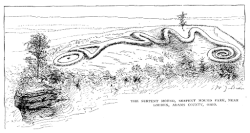This article needs additional citations for verification .(December 2024) |
| Periods in North American prehistory |
|---|
 |

This is a timeline of in North American prehistory, from 1000 BC until European contact.
This article needs additional citations for verification .(December 2024) |
| Periods in North American prehistory |
|---|
 |

This is a timeline of in North American prehistory, from 1000 BC until European contact.
With an assumed total systematic error of 30 ± 20 years, as a mean for various tree rings, the calibrated age range of L'Anse aux Meadows is AD 975–1020. This agrees well with the assumed historical age of ca AD 1000, a result which has also been recently corroborated by high-precision accelerator dating at the University of Toronto.
This is a substantial base for analysis, which yields an entirely credible range of dates between 990 and 1050 and a mean date of 1014 CE, which is popularly rounded off at 1000 CE .
Modeling results were remarkably consistent, and model A suggests Norse occupation began Cal AD 910–1030..... A weighted mean of twig dates—notwithstanding issues associated with combination of 14C ages from multiple individuals—provided a result of AD 986–1022